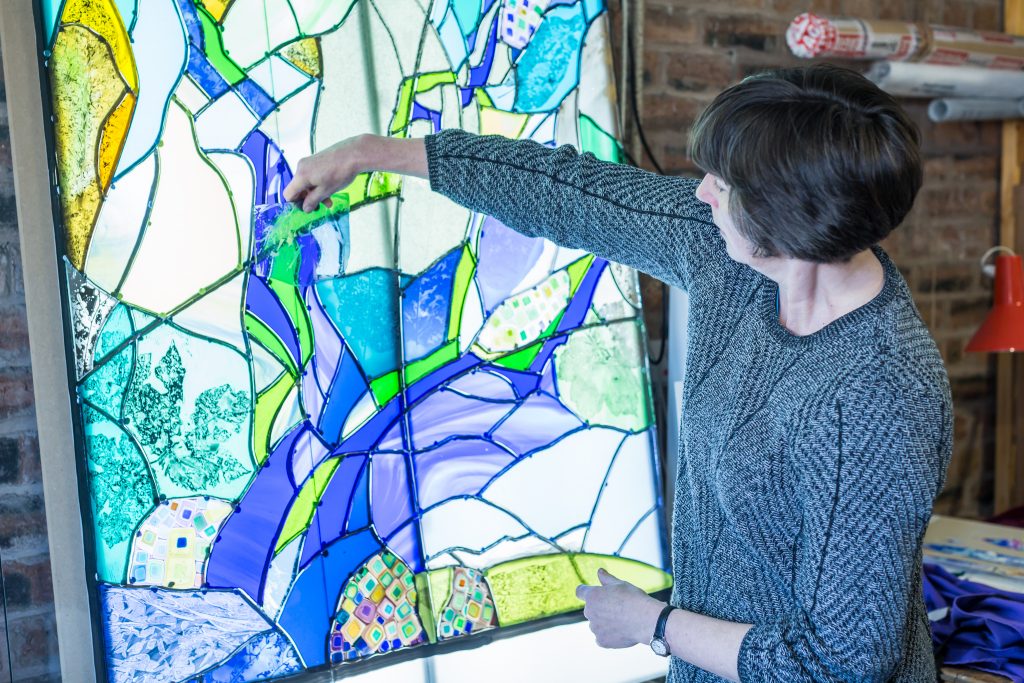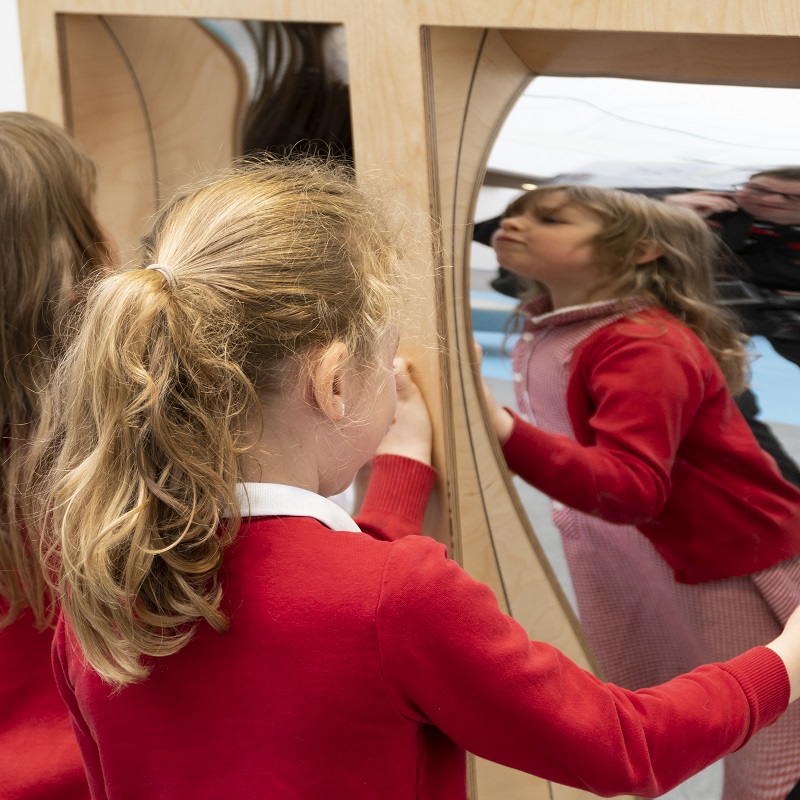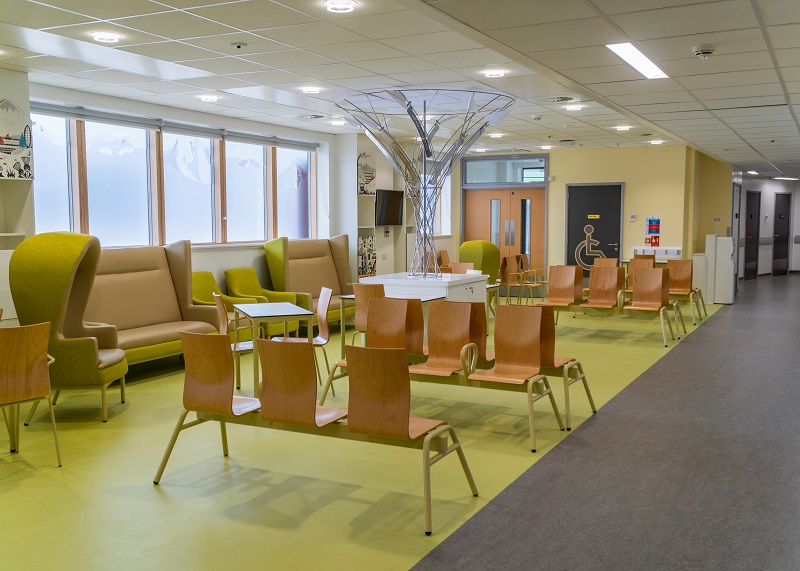With less than two weeks until the £150m development opens its doors to patients, NHS Lothian this week unveiled the state-of-the-art new Royal Hospital for Children and Young People and Department of Clinical Neurosciences.
Visitors and patients have been given a sneak peek inside the new hospital, which opens its doors later this month.
Over £5m of charity funding has been spent to enhance the hospital environment, with more than 20 arts projects and 30 different artists involved, working with patients young and old.
They have created a totally-unique art and therapeutic design programme in what is the largest capital commissioning programme for art in a new hospital in the UK.
The new facility will be home to services from the current Royal Hospital for Sick Children; Department of Clinical Neurosciences (DCN) at the Western General, and the Child and Adolescent Mental Health Services (CAMHS).
The facility is set to open next to the Royal Infirmary Edinburgh on the Edinburgh BioQuarter Campus in Little France, with the new Emergency Department opening to its first patients from 8am on 9 July.
The existing Emergency Department at RHSC will close that morning and St John's Hospital will remain unaffected.
The large-scale arts programme has been funded through £3.1m from the Edinburgh Children’s Hospital Charity and another £2m from the Edinburgh and Lothians Health Foundation.
It has been curated and produced by art and design consultant. Ginkgo.
Roslyn Neely, chief executive for Edinburgh Children’s Hospital Charity, said: “Edinburgh Children’s Hospital Charity exists to transform the experiences of children and young people in hospital so they can be a child first and a patient second.
“From the excitement of the ‘Pod’ waiting area and ward playrooms; to the calming effect of the family interview spaces, the enhancements recognise the importance of environment in helping to reduce anxiety, provide distraction, and create a sense of welcome.
“A trip to hospital can be daunting, but we hope that the innovative use of art and design will help to reduce that anxiety for all visitors to this special place.”
Susan Grant, arts manager for Edinburgh and Lothians Health Foundation, added: “We are delighted to have co-funded and commissioned these really-ambitious art and design projects for the new Royal Hospital for Children and Young People & Department of Clinical Neurosciences.
“Part of our diverse programme of arts activities designed to enhance patient experiences across NHS Lothian, we hope this programme of commissions and artist residencies – full of delights and distractions to discover and explore – engages patients, staff and visitors alike and makes their time at the hospital more comfortable.”

Stained-glass windows, musical installations, and artwork bring the building to life
And Tim Davison, chief executive of NHS Lothian, told BBH: “These projects are very exciting and are about enhancing patient and family experiences.
“We have stained-glass windows, musical installations, and artwork that brings the building to life and supports healing and recovery.
“The artists and designers have worked closely with patients and their families as well as staff in the development of their design proposals.”
Highlights from the art and therapeutic design programme include:
RHCYP play and waiting area enhancement: Warren Design and Emily Hogarth
The main RHSC waiting area, which is known as the ‘Pod’, is full of integrated technology to create a fun and welcoming escape from clinical areas.
The large and airy space was developed by design team, William Warren and Daniel Warren. And they designed a number of bespoke furniture pieces, as well as features that will include digital technology, activities for young people, and soft play areas.
Artist, Emily Hogarth, has produced some eye-catching cut-out graphics in collaboration with Warren Design to enhance the waiting and play areas.
Spine Wall: Peter Marigold
The Spine Wall is the backbone of the building and runs 188m through the hospital, including both outside areas and the main atrium space.
It is made of concrete, but the prints have been formed from skin textures that have been magnified to form three-dimensional abstract panel forms.
RHCYP and DCN interview rooms, sitting rooms and drop-in centre: Dress for the Weather
Design team, Dress for the Weather,developed an enhanced interior design strategy for the interview rooms, the sitting rooms within the new RHCYP and DCN, and the RHCYP drop-in centre.
The interview rooms are an important and often-sensitive environment, and the team developed subtle designs which make those in the rooms feel both comfortable and secure.
A theme has been developed for each of the sitting rooms, relating it to a more-domestic counterpart. These include a games room, reading room, and solarium.

Thearts programme has been funded through £3.1m from the Edinburgh Children’s Hospital Charity and another £2m from the Edinburgh and Lothians Health Foundation
The drop-in centre design is multi-functional, adaptable, and homely, and will include bespoke patterns created with users and staff of the current service.
Old to New: Kate Ive (Sculptor) / Emma Dunmore (Researcher) / Joachim King (Cabinet Maker)
The focus of this project is to share the identity, history, and stories of the three institutions as they undergo a transition from their original sites to the new build at the BioQuarter, Little France.
A series of 19 beautifully-crafted wall-mounted display cases showcase archived and historical materials, in conjunction with the Lothian Health Services Archive, alongside newly-commissioned works.
All the content is thought-provoking, educational, descriptive, storytelling and attractive, with a personal touch.
Researcher, Emma Dunmore, was commissioned to explore the archival and historical material available while Kate Ive has evolved the project into a series of sculptural artworks which reinterpret the histories and stories of the three hospitals.
Artist residency programme
Five artist residencies and fellowships created a body of new work and foster new cultural relationships arising from creative collaborations within the health and wellbeing research and practice agenda with the hospitals and city communities.
The work produced has been shown in a number of venues include the existing RHSC and DCN and also with city partners.

The main RHSC waiting area includes bespoke furniture
Facts about the new hospital
- A New children’s emergency department next to the Royal Infirmary of Edinburgh Adult Emergency Department
- 10 theatres
- 242 beds
- 4 MRI scanners, one being an inoperative scanner, allowing surgeons to perform MRI scans during surgery that can help prevent follow-up surgery
- 13 inpatient and day care wards
- A paediatric critical care unit
- Therapy departments
- Outpatients department
- Outdoor play areas
- Physical and mental health specialities on one site
- Modern imaging equipment
- Ronald McDonald House; accommodation for families of paediatric patients
